Edward Weston. Il corpo e la linea

Dal 11 May 2016 al 14 August 2016
Torino
Luogo: CAMERA – Centro Italiano per la Fotografia
Indirizzo: via delle Rosine 18
Orari: 11-19; Martedì chiuso; Giovedì 11-21
Curatori: La mostra presenta una selezione di opere provenienti dalla Collezione di Philip e Rosella Rolla, nata dalla passione per l’arte contemporanea dell’imprenditore svizzero Philip Rolla e della moglie Rosella. La collezione, che ha preso avvio negli anni ’90 con l’acquisto di opere d’arte concettuale e minimaliste, si è arricchita sempre più di materiale fotografico con l’aumentare dell’interesse dei coniugi Rolla per questo linguaggio espressivo. Le immagini selezionate per l’esposizione Edward We
Enti promotori:
- MiBACT
- Regione Piemonte
- Città di Torino
Telefono per informazioni: +39.011.0881150
E-Mail info: camera@camera.to
Sito ufficiale: http://camera.to
La mostra presenta una selezione di opere provenienti dalla Collezione di Philip e Rosella Rolla, nata dalla passione per l’arte contemporanea dell’imprenditore svizzero Philip Rolla e della moglie Rosella. La collezione, che ha preso avvio negli anni ’90 con l’acquisto di opere d’arte concettuale e minimaliste, si è arricchita sempre più di materiale fotografico con l’aumentare dell’interesse dei coniugi Rolla per questo linguaggio espressivo.
Le immagini selezionate per l’esposizione Edward Weston. Il corpo e la linea. Ritratti di Edward Weston e disegni dei Minimalisti americani costituiscono quindi una selezione che riflette il carattere della Collezione Philip e Rosella Rolla, presentando un estratto esemplificativo dell’intera raccolta.
L’esposizione accosta le fotografie di Edward Weston ai disegni di alcuni fra i maggiori esponenti del Minimalismo americano, tra cui Dan Flavin, Donald Judd, Sol Lewitt, Fred Sandback e Richard Serra, evidenziando forti affinità metodologiche e stilistiche: se Weston cerca il rigore geometrico nel mondo dei volti e dei corpi, i Minimalisti traducono il mondo stesso in geometria.
Apparentemente distanti, questi due gruppi di opere hanno invece numerose caratteristiche in comune e scaturiscono da interessi e sensibilità simili, evidenziati all’interno di un percorso teso a mostrare entrambi sotto una nuova luce attraverso un dialogo tanto inedito quanto serrato.
Tra i principali protagonisti della storia della fotografia mondiale, Edward Weston inizia la sua carriera in California all’inizio del Novecento, a Tropico, un piccolo paese a pochi passi da Los Angeles, dove apre uno studio ed esegue i primi ritratti. Lo stile è molto diverso da quello che lo renderà celebre in futuro e si rifà ai canoni del pittorialismo classico: atmosfere sognanti, contorni sfocati, filtri flou, carte spesse e ambrate.
Da queste rare immagini di tono familiare ha inizio la mostra, che indaga l’attività di ritrattista di Weston attraverso una serie di campioni. Ci sono le fotografie del periodo del ‘Gruppo f/64’, che fonda con Ansel Adams nel 1932 e apoteosi di essenzialità e rigore, fino ai nudi e ai personaggi famosi: lo scrittore Leon Wilson, la pittrice Dorothy Brett e il compositore Igor Stravinskij.
Insieme, le immagini selezionate per la mostra danno il senso dell’incessante interesse di Edward Weston per la figura umana e svelano le peculiarità con cui vi si confronta, studiandola in ogni particolare con l’attenzione di un miniaturista, centimetro per centimetro.
Dan Flavin, Donald Judd, Sol Lewitt, Fred Sandback e Richard Serra sono i grandi autori delle opere con cui le fotografie di Weston sono messe a confronto. Anch’esse appartengono a una particolare tipologia di produzione: sono disegni, che con il loro carattere discreto si accostano delicatamente ai ritratti d’epoca, innescando nuove letture ed evidenziando alcune caratteristiche comuni.
Come gli artisti della Minimal Art, anche Weston fa della ripetizione uno dei cardini della sua poetica. Anche quando si cimenta con il ritratto segue alcune regole ricorrenti, come la neutralità dell’espressione, l’assenza di frontalità e il taglio ravvicinato. In particolare riprende ogni soggetto più volte, a ripetizione, stampando infine diverse immagini – in questa rara occasione presentate contemporaneamente – senza la necessità di sceglierne una soltanto. Weston insiste, come i Minimalisti.
E come loro il suo immaginario è fondato sui concetti di disciplina, geometria, esattezza e scientifica armonia. Il suo modulo è lo spazio neutro dell’inquadratura: spazio che nelle opere qui presentate spesso si confonde con quello dello studio del ritrattista.
Una mostra di grandi artisti statunitensi, per guardare l’altro lato dell’Atlantico da una nuova angolazione.
SCARICA IL COMUNICATO IN PDF

-
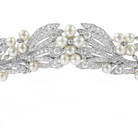 Dal 14 November 2025 al 15 March 2026
Roma | Musei Capitolini
Dal 14 November 2025 al 15 March 2026
Roma | Musei Capitolini
Cartier e il Mito ai Musei Capitolini
-
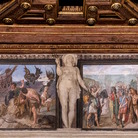 Dal 14 November 2025 al 15 February 2026
Bologna | Palazzo Fava
Dal 14 November 2025 al 15 February 2026
Bologna | Palazzo Fava
Michelangelo e Bologna
-
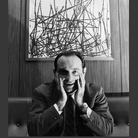 Dal 13 November 2025 al 18 April 2026
Roma | Musei Vaticani
Dal 13 November 2025 al 18 April 2026
Roma | Musei Vaticani
“L’irrefrenabile curiosità”. Capolavori del Novecento dalla Collezione di Leone Piccioni
-
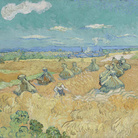 Dal 15 November 2025 al 10 May 2026
Treviso | Museo Santa Caterina
Dal 15 November 2025 al 10 May 2026
Treviso | Museo Santa Caterina
DA PICASSO A VAN GOGH. Capolavori dal Toledo Museum of Art. Storie di pittura dall’astrazione all’impressionismo
-
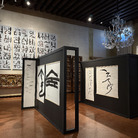 Dal 8 November 2025 al 11 January 2026
Venezia | Museo Correr
Dal 8 November 2025 al 11 January 2026
Venezia | Museo Correr
CARATTERI. Calligrafia e tipografia: Corea del Sud e Stati Uniti
-
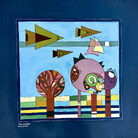 Dal 8 November 2025 al 22 February 2026
Brescia | Museo di Santa Giulia
Dal 8 November 2025 al 22 February 2026
Brescia | Museo di Santa Giulia
Material for an Exhibition. Storie, memorie e lotte dalla Palestina e dal Mediterraneo


